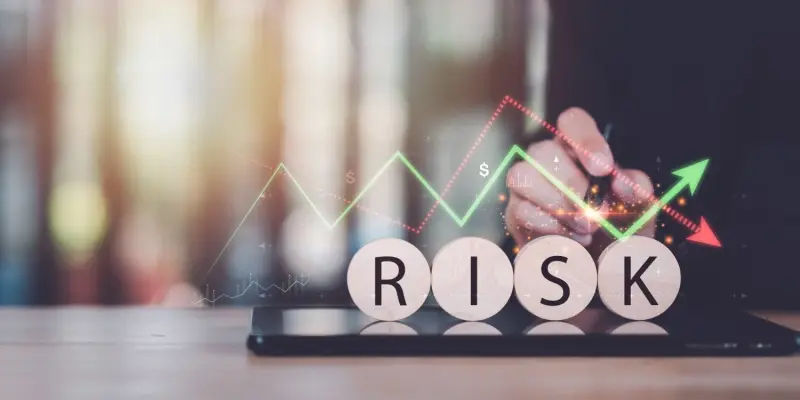Decentralized finance (DeFi) has emerged as one of the most revolutionary aspects of blockchain technology, promising to transform the way financial services are provided. Its rapid growth has captured widespread attention, drawing in a multitude of developers, investors, and users eager to explore this new frontier. However, the flourishing of DeFi brings to the forefront discussions about its sustainability and the essential components for its future security, particularly concerning risk management. Recent occurrences within DeFi platforms like Hyperliquid have exposed significant vulnerabilities, highlighting the need for stronger risk controls. As DeFi evolves, the industry faces a critical question: is robust risk management a prerequisite for its continued prosperity and credibility?
The Vulnerabilities in DeFi
A closer look at recent events reveals the precarious nature of DeFi platforms when it comes to security and integrity. Market manipulation incidents, such as those seen on Hyperliquid, have exposed the susceptibility of DeFi environments to deliberate exploits that can force liquidations and undermine market stability. For example, a well-coordinated manipulation involving Ethereum was executed to trigger a forced liquidation, adversely affecting Hyperliquid’s liquidity pool. Another case focused on the exploitation of a low-cap memecoin, JELLY, to create disruptive market distortions. These examples serve as cautionary tales that underline the inadequacies of existing risk management protocols within DeFi. The lack of robust safeguards puts the credibility and long-term viability of DeFi platforms at risk, as they currently lack the necessary mechanisms to effectively counter such threats.
Learning from Traditional Finance
In addressing these vulnerabilities, DeFi has much to gain by taking cues from the longstanding practices of traditional finance, known as TradFi. Traditional financial systems have grappled with analogous crises over the years, including incidents like derivatives catastrophes and rogue trading. These events led to the implementation of comprehensive risk management strategies that have significantly strengthened TradFi frameworks. Features such as position limits, capital requirements, and stress testing have become integral components of the risk management arsenal in traditional finance. These practices offer valuable lessons for the DeFi domain, which can benefit from integrating similar protocols to enhance stability and trust. By looking to TradFi’s historical developments, DeFi can identify practices that safeguard against volatility and exploitation, fostering an environment where innovation and security coexist harmoniously.
The Myth of Innovation vs. Risk Controls
One persistent misconception within the DeFi space is the belief that stringent risk controls might impede innovation. The incidents on the Hyperliquid platform decisively challenge this notion, suggesting that effective risk management is not an obstacle but rather a necessary foundation for sustained progress. Risk management acts as a stabilizing force, ensuring that innovation occurs within safe parameters. Incorporating risk controls such as position caps, margin locks, and established asset listing standards into DeFi frameworks can promote a climate of trust and resilience. These mechanisms enable platforms to maintain their creative edge while safeguarding against potential hazards that could otherwise stymie development. By embedding strategic risk measures, DeFi can secure robust growth and inspire confidence among users and investors, while simultaneously fostering an innovative spirit.
Interconnected Risks in DeFi
The decentralized essence of DeFi creates a web of interconnected platforms, tokens, and protocols, inherently amplifying potential risks across various channels. These interconnections complicate risk management, as a failure in one sector can lead to cascading repercussions throughout the ecosystem. Technical glitches, market vulnerabilities, reputational damage, and regulatory challenges emerge as significant threats that require disciplined risk management practices. The interconnected nature of DeFi necessitates a comprehensive approach to risk mitigation, as isolated incidents have the potential to escalate into widespread disruptions. By establishing standardized risk controls across platforms, DeFi can enhance its resilience to such cascading effects and ensure that new nodes in its network do not become points of vulnerability. Implementing stringent security protocols and harmonizing expectations across platforms will be pivotal in minimizing risks and bolstering the ecosystem.
Embracing Maturity and Resilience
To position itself as a credible alternative to traditional financial systems, the DeFi industry must undergo a cultural transformation where risk management is embraced as a milestone of maturity rather than merely an obligatory practice. Those projects that prioritize developing resilient structures capable of withstanding numerous threats will likely ascend as future leaders in the DeFi space. This evolution towards maturity holds immense importance in navigating the unpredictable tides of market volatility, regulatory scrutiny, and manipulation efforts. A refined perspective that views risk management as an enabler of growth rather than a hindrance will be instrumental in propelling DeFi platforms toward success. By fostering robust systems that balance innovation with secure protocols, DeFi can build a sustainable future while reassuring stakeholders of its capability to withstand diverse challenges.
Preserving Decentralization
Amid the drive to reinforce risk management, it is crucial for the DeFi industry to remain faithful to the decentralization ethos intrinsic to its identity. The challenge lies in harmonizing effective risk controls with the preservation of decentralization, ensuring that security enhancements do not disrupt the fundamental independence inherent in DeFi frameworks. Innovative solutions that leverage blockchain’s unique technologies can help achieve this balance by incorporating decentralized governance and automated mechanisms to safeguard both system security and decentralized principles. By adopting novel approaches that marry risk management with decentralization, DeFi can maintain its core values while effectively managing the complexities associated with decentralized networks. As DeFi continues to advance, a steadfast commitment to robust risk management will be paramount in securing its continued growth and durability.

